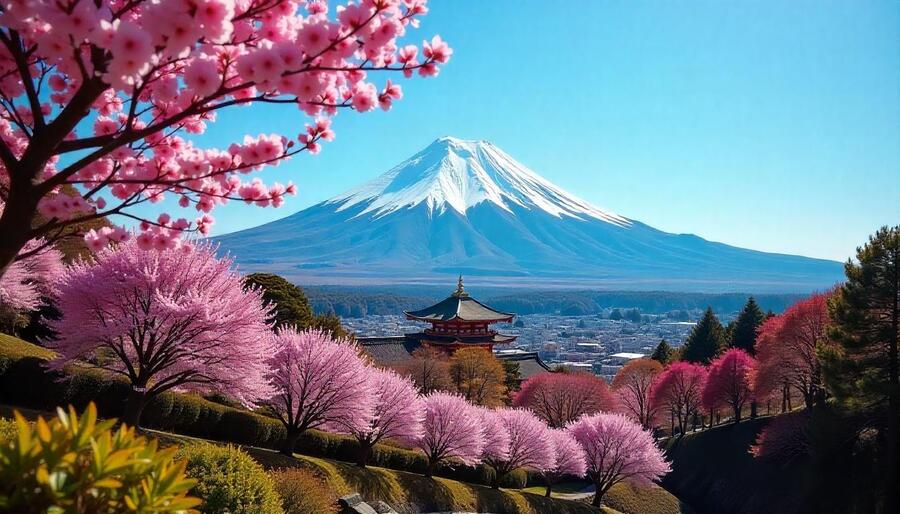≡-Japan Tourism Faces Unprecedented Growth With Nearly Thirty-Seven Million Foreign Visitors And Domestic Decline – Viral of Today
<> Viral of Today <>
Home » Japan Travel News » Japan Tourism Faces Unprecedented Growth With Nearly Thirty-Seven Million Foreign Visitors And Domestic Decline Monday, June 2, 2025Japan’s tourism landscape in 2024 presents a striking contrast: while the country welcomed nearly thirty-seven million foreign visitors, setting new records and showcasing its growing global appeal, domestic travel among Japanese residents declined significantly. This disparity is largely driven by rising travel costs, overcrowding in popular destinations, and broader economic pressures on households, which have collectively discouraged locals from exploring their own country as frequently as before.Japan’s Tourism Trends in 2024 Reveal Surging Foreign Visitors but Declining Domestic Travel Amid Rising Costs and CrowdsOn May 27, Japan’s cabinet unveiled its latest tourism white paper, revealing compelling insights into the nation’s travel patterns during the 2024 fiscal year. The report highlights an impressive milestone: foreign visitor arrivals to Japan soared to approximately 36.87 million last year, breaking all previous records. This surge signals Japan’s rising appeal as a global travel destination, attracting unprecedented numbers of international tourists eager to experience the country’s rich culture, history, and natural beauty.While inbound tourism in Japan has surged dramatically, the number of trips made by residents traveling domestically has noticeably declined. In 2024, domestic journeys totaled around 540 million, representing a drop of 8.2% compared to pre-pandemic levels in 2019. This downward trend highlights shifting patterns in local travel, driven by evolving social and economic factors impacting how Japanese people choose to explore their own country.The white paper points to Japan’s shrinking and aging population as a significant underlying cause for reduced domestic travel. With a continuing decline in birthrates and a contracting overall population, the pool of potential domestic travelers naturally shrinks. To counteract this trend, the government and local communities have launched creative initiatives to encourage more frequent and longer domestic trips among Japanese residents.One innovative program in Kotohira, a town in Kagawa Prefecture, invites visitors to offset travel expenses by working part-time in local inns or restaurants during their stay. This immersive approach allows travelers to engage deeply with the local culture while easing financial burdens. Similarly, another initiative in rural regions of Niigata and Nagano Prefectures pairs visitors with farmers to participate in hands-on agricultural activities. These experiences foster meaningful interpersonal connections and nurture a sense of belonging, encouraging repeat visits as travelers begin to see these areas as a “second home.”Despite these efforts, public reaction on social media and online forums has been skeptical about attributing the decline in domestic travel solely to demographic factors. Many Japanese citizens argue that their reasons for traveling less are far more practical: overcrowding in popular tourist hotspots and the rising costs of travel within Japan.Crowding has become a major deterrent for domestic tourists, particularly in famous destinations like Kyoto, Tokyo’s Shibuya district, and other iconic sites. While these areas have long been bustling with local visitors, the recent influx of international tourists has pushed congestion levels to new heights. Some locals express frustration over the growing perception that certain foreign visitors do not always respect local customs or behave considerately, which further dampens the travel experience for many Japanese.Equally impactful is the sharp rise in travel expenses, driven largely by the weakening yen. This currency shift has made Japan an even more attractive bargain for international tourists converting their stronger home currencies into yen. As a result, hotels, restaurants, and tourist attractions have raised their prices substantially to capitalize on foreign demand. Unfortunately, this inflation of travel costs has hit domestic travelers hard.While inbound tourists benefit from favorable exchange rates, Japanese consumers face rising living costs across the board—groceries, utilities, clothing, and transportation fares have all increased significantly in recent years. These price hikes have not been met with proportional wage increases for most workers, squeezing household budgets and limiting discretionary spending. Consequently, many locals are reluctant to pay premium prices for accommodations and experiences that once felt affordable.The cumulative effect of these factors is evident in widespread online commentary responding to the government’s report:“Everything is just too expensive now, especially hotels.”“Domestic travel feels like a rip-off these days.”“Prices are clearly being hiked up to cater to foreign visitors.”“It’s impossible to find lodging that isn’t overcrowded with tourists from abroad.”Such sentiments underscore a growing divide in the domestic tourism market. As prices rise and crowds swell, many Japanese travelers are choosing to stay home rather than endure the discomfort and expense. This trend risks creating a self-reinforcing cycle: with fewer domestic visitors willing to pay high rates, hotels and local businesses become increasingly dependent on foreign tourists who benefit from currency advantages. This dependency then fuels further price increases and overcrowding, pushing even more locals away from traveling.Interestingly, despite the overall reduction in domestic trips, spending by Japanese travelers within the country hit a record high last year, topping 25 trillion yen. This suggests that while fewer people are traveling, those who do are spending more per trip—turning domestic travel into a more luxurious and selective experience. In other words, a growing financial gap is emerging between those who can afford to indulge in travel and those who feel compelled to tighten their belts.Looking ahead, this dynamic poses complex challenges for Japan’s tourism industry and policymakers. Balancing the needs and preferences of domestic travelers with the lucrative opportunities presented by international visitors will require nuanced strategies. Expanding innovative local programs that combine cultural immersion with cost-sharing models might offer a way to rekindle enthusiasm for domestic travel among residents. At the same time, addressing concerns about overcrowding and maintaining the authenticity of beloved travel destinations is essential to preserve their long-term appeal.Japan tourism surged with nearly thirty-seven million foreign visitors in 2024, but rising costs and overcrowding have led to a notable drop in domestic travel among locals.Japan’s 2024 tourism landscape is marked by a remarkable international visitor boom set against a backdrop of declining domestic travel. The interplay of demographic shifts, rising costs, and crowding shapes a complex picture that demands thoughtful attention. As Japan continues to welcome travelers from around the world, ensuring that its own citizens remain active participants in exploring their country will be key to sustaining a vibrant and balanced tourism sector for years to come.
This information will surprise you!
See also
- Read until the end to discover everything.
- Important information you need to know.
- Interesting facts and helpful tips.
Conclusion
Did you enjoy the news? Keep following us daily!













